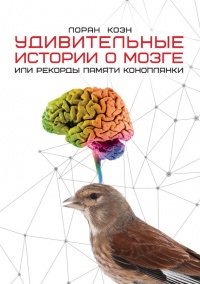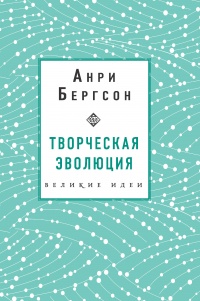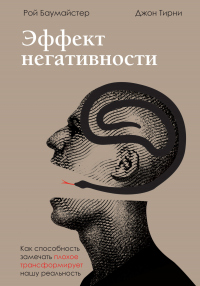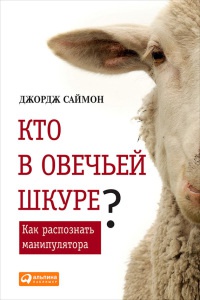(2008), "Why do dolphins carry sponges?," PLoS ONE 3 (12), e3868; и V. Gill (2014), "Cockatoos teach tool-making tricks," BBC News, September 3, www.bbc.co.uk/news/science-environment-28990335.
199
См. M. Haslam et al. (2019), "Wild sea otter mussel pounding leaves archaeological traces," Scientific Reports 9, 4417.
200
См. T. Breuer et al. (2005), "First observation of tool use in wild gorillas," PLoS Biology 3 (11), e380.
201
См. K. Wantanabe et al. (2007), "Long-tailed macaques use human hair as dental floss," American Journal of Primatology 69 (8), 940–944.
202
См. J. Wimpenny et al. (2009), "Cognitive processes associated with sequential tool use in New Caledonian crows," PLoS ONE 4 (8), e6471.
203
См. J. Plotnik et al. (2011), "Elephants know when they need a helping trunk in a cooperative task," Proceedings of the American Academy of Science 108 (12), 5116–5121; и B. Hart et al. (2001), "Cognitive behaviour in Asian elephants: Use and modification of branches for fly switching," Animal Behaviour 62 (5), 839–847.
204
См. J. Finn et al. (2009), "Defensive tool use in a coconut-carrying octopus," Current Biology 19 (23), R1069–R1070.
205
См. A. Rutherford (2018), The book of humans (London: Weidenfeld and Nicholson); and M. Greshko (2018), "Why these birds carry flames in their beaks," National Geographic, January 8.
206
См. D. Hanus and J. Call (2008), "Chimpanzees infer the location of a reward based on the effect of its weight," Current Biology 18, R370–R372.
207
Я нашел видео, где шимпанзе катаются на коньках, но это явно результат дрессировки животных: шимпанзе не занимаются серфингом, катанием на коньках или скейтборде в дикой природе. См. "Chimps on ice," YouTube, August 12, 2008, www.youtube.com/watch?v=pOj_QoSH6is. Видеозапись вороны, катающейся на сноуборде, см. "Crowboarding: Russian roof-surfin' bird caught on tape," YouTube, www.youtube.com/watch?v=3dWw9GLcOeA. Катание вороны на сноуборде легко можно истолковать как результат обучения за вознаграждение, а не как свидетельство изобретения. Наконец, есть видео, на котором снежные макаки лепят снежки и катят их по склону, но это больше похоже на социальное научение: в их окружении так делают другие, — чем на явное свидетельство того, что они понимают причинную связь. См. L. Young (2016), "Watch this adorable baby macaque roll a snowball down a hill," Atlas Obscura, December 16, www.atlasobscura.com/articles/watch-this-adorable-baby-macaque-roll-a-snowball-down-a-hill.
208
Я предлагаю новый термин «системная слепота», который сродни термину, который я ввел в своей книге «Слепота разума» (Mindblindness).
209
О понимании причинно-следственных связей у дошкольников см. A. Gopnik and L. Schulz (2004), "Mechanisms of theory formation in young children," Trends in Cognitive Sciences 8 (8), 371–377; A. Gopnik and L. Schulz (2007), Causal learning: Psychology, philosophy, and computation (New York: Oxford University Press); A. Taylor et al. (2014), "Of babies and birds: Complex tool behaviours are not sufficient for the evolution of the ability to create a novel causal intervention," Proceedings of the Royal Society of London: Series B: Biological Sciences 281 (1787), 20140837; и K. M. Dewar and F. Xu (2010), "Induction, overhypothesis, and the origin of abstract knowledge evidence from 9-month-old infants," Psychological Science 21 (12), 1871–1877.
210
См. F. Stewart et al. (2011), "Living archaeology: Artefacts of specific nest site fidelity in wild chimpanzees," Journal of Human Evolution 61 (4), 388–395.
211
См. D. Povinelli et al. (2000), Folk physics for apes: The chimpanzee's theory of how the world works (Oxford: Oxford University Press); и D. Penn and D. Povinelli (2007), "Causal cognition in human and non-human animals: A comparative, critical review," Annual Review of Psychology 58, 97–118. О попытках научить обезьян пользоваться инструментами см. N. Toth et al. (1993), "Pan the tool-maker: Investigations into the stone tool making and tool-using capabilities of a bonobo (Pan paniscus)," Journal of Archaeological Science 20 (1), 81–91.
212
Интересно, что шимпанзе в конце концов научились использовать грабли в правильном положении, но им потребовалось для этого как минимум двадцать пять попыток. Это говорит о том, что для получения еды они использовали другой процесс — ассоциативное научение, в отличие даже от маленького ребенка, который сразу понимает причинно-следственные связи и значение правильного положения граблей. См. D. Povinelli and S. Dunphy-Lelii (2001), "Do chimpanzees seek explanations? Preliminary comparative investigations," Canadian Journal of Experimental Psychology 55 (2), 187–195.
213
См. A. Bania et al. (2009), "Constructive and deconstructive tool modification by chimpanzees (Pan Troglodytes)," Animal Cognition 12, 85–95; I. Davidson and W. McGrew (2005), "Stone tools and the uniqueness of human culture," Journal of the Royal Anthropological Institute 11 (4), 793–817.
214
Хосеп Колл и его коллеги представляют некоторые доказательства, которые могут опровергнуть выводы Повинелли. См. Hanus and Call (2008), "Chimpanzees infer the location of a reward"; и C. Volter et al. (2016), "Great apes and children infer causal relations from patterns of variation and covariation," Cognition 155, 30–43.
215
О причинности см. M. Lombard and P. Gärdenfors (2017), "Tracking the evolution of causal cognition in humans," Journal of Anthropological Sciences 95, 1–16. Ломбард и Йерденфорс называют это «причинной грамматикой», но я просто называю это систематизацией или поиском закономерностей «если-и-тогда».
216
О луке и стрелах см. Brown et al. (2011), "An early and enduring advanced technology"; and M. Lombard and M. Haidle (2012), "Thinking a bowand-arrow set: Cognitive implications of Middle Stone Age bow and stone-tipped arrow technology," Cambridge Archaeological Journal 22, 237–264.
217
Хотя некоторые шимпанзе бросали камни в деревья, было высказано предположение, что они делают это просто для привлечения самок, не понимая причинно-следственных связей. См. H. Kuhl et al. (2016), "Chimpanzee accumulative stone
























